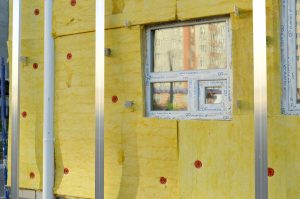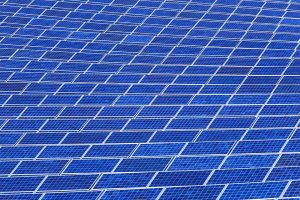Save energy tips – Damp reduces insulation properties
Damp damages building structures and reduces the insulation properties of materials. Check and repair any damaged damp-proof coursing. Also, check for broken drainage pipes and roof damage to ensure that leaks don’t penetrate the building structure.
| Aspect | energy efficiency |
| Sectors | my business, my community, my household, public sector organisations |
Fit double-glazed windows
Introducing secondary or double-glazing will reduce heat losses, minimise draughts, and may improve comfort for occupants by reducing noise. This option is perhaps best considered as part of a major refurbishment, as the capital cost of introducing secondary or double-glazing is high and the payback period from energy savings is typically long.
| Aspect | energy efficiency |
| Sectors | my business, my community, my household, public sector organisations |
Fit strip curtains or swing doors to heated loading areas
At larger premises in particular, large open doors are often required for moving goods or equipment. These are areas where large heat losses can occur between a heated indoor area and the outside. Sometimes, expensive heaters (often known as air-curtains) can be positioned above loading bays or other large doors, giving a curtain of hot air at the boundary area. Much of this heat escapes to the outside. Plastic strip curtains or swing doors are suitable partitions for large open doors, and will considerably reduce the energy wastage over that of an air-curtain. If, due to the constant traffic through the doors, air curtains are essential, ensure that they are switched off when not needed, especially in summer.
| Aspect | energy efficiency |
| Sectors | my business, public sector organisations |

Improve loft and roof insulation
The capital cost is approximately £4.50 per square metre for loft insulation. Energy savings can be up to 90% in poorly insulated buildings. Uninsulated loft spaces or roofs are a major cause of heat loss. In particular, single-skin metal roofs are very poor at keeping in heat.
Installing proper insulation requires up to 90% reduction in heat loss. Loft spaces should be insulated with a minimum of 150mm of insulation material. At the same time, care should be taken to insulate water tanks and pipes to avoid freezing and to ensure that heat is not wasted in unheated areas. Single-skin roofs can be insulated with appropriate lining and sprays. Flat and pitched roofs can also be insulated, especially during retrofit.
An alternative measure is to install suspended ceilings to reduce the volume of air that needs to be heated and provide additional insulation. Lighting is often improved in this way.
| Aspect | Kent energy efficiency |
| Sectors | my business, my community, my household waste, Tunbridge Kent, public sector organisations |
Improve wall insulation
Heating costs will be reduced by the effective insulation of walls. Comfort is also improved for occupants. Older buildings are often single-wall structures, whereas more modern buildings typically have a cavity (gap) separating two external walls. Internal cladding or lining can be used to insulate the walls of older buildings. This cladding can also be applied to modern buildings, which can be further insulated by filling the cavity between the external walls with insulation. The effectiveness of cavity wall insulation depends on the insulation properties of the existing wall (almost certainly worse the older the building), although payback periods are generally within a couple of years. There are grants available.
| Aspect | energy efficiency |
| Sectors | my business, my community, my household, public sector organisations |
Minimise draughts
Heated air can escape through gaps around poorly maintained doors, windows, letterbox flaps, roof lights, ventilators, and redundant flues. Radiators and thermostats are often turned up to compensate for this heat loss.
The same applies for incoming cold draughts. Check for and seal any gaps in windows and doors with draught proofing. Fit spring-loaded door closers to any external doors that are often left open or do not close properly. Block off or remove redundant flues, but be careful to fit a vent to inbuilt brick chimneys so as to prevent dampness from setting in. Close off ventilators used for summer cooling before the heating season begins.
You must avoid sealing ventilators needed for removing fumes, odours or condensation. Also, make sure that all combustion appliances are adequately ventilated.



